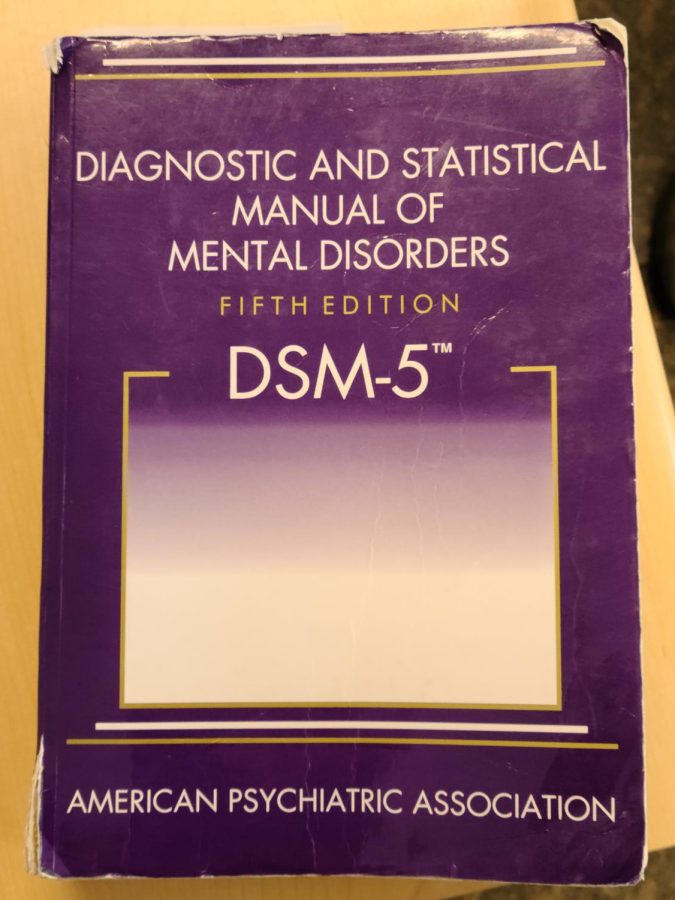Gender envy and dysphoria: What is it?
Opinion: My research and thoughts- how does it affect someone’s everyday life?
It is unknown to us how many people identify as transgender, and though there is a percentage of people who are professionally diagnosed with gender dysphoria, there is no saying how many people actually fit the criteria. Gender dysphoria is an ongoing struggle; it’s often very uncomfortable for individuals who struggle with it, and it can be the cause of many issues if not dealt with properly.
According to psychiatry.org, gender dysphoria is when you have this feeling of uneasiness with your biological sex and your gender identity; they could be mismatched.
To start, the DSM-5 (Diagnostic and Statistical Manual of Mental Disorders) states only about 0.005% of males that are assigned at birth are diagnosed with gender dysphoria and only about 0.003% of females assigned at birth are diagnosable. This does not include those who experience crucial struggles with it, along with meeting the criteria, who are undiagnosed.
Before reading this short article, please note that just because you may feel like you didn’t want to be a girl/boy once or twice, it doesn’t mean you struggle with something as serious as gender dysphoria.
In my opinion, it’s okay to experiment, and if you feel like you would like to try different pronouns to see if you’re more comfortable with it, that’s okay too. Even if you think you struggle with gender identity, it doesn’t mean that you have gender envy and or dysphoria. It’s not okay if you are doing it only as a mockery towards others.
Our society is still working towards understanding and accepting those who fall into the transgender category, but to really grasp it – or rather put yourself in someone else’s shoes – knowing what these individuals may struggle through every day may help.
Are you comfortable with your body parts? Do you like the gender you were assigned? If you’ve never experienced gender dysphoria, your answer is likely yes.
Try to imagine how you would feel if you were uncomfortable with your assigned parts. How would you feel when people think you’re someone that you’re not or don’t want to be? How would it feel if you knew your gender identity didn’t match your sex?
How exactly would you feel?
Gender dysphoria can be the cause of a lot of other mental issues that include depression and anxiety, given the dissatisfaction with that certain person’s body. It can be hard to come to terms with being transgender, and even harder to accept it altogether.
According to multiple online sources, gender dysphoria impairs the ability to function at school and or at work in fear of being harassed for the way these people would like to dress and act instead of the way they are expected to.
Relationship problems with friends and family are also common, depending on the situation, the severity of depression and anxiety can vary which can lead to self-harm, eating disorders, substance abuse, and even suicide.
Some of the listed issues above are physical and are, if not more, just as dangerous as mental issues. Often, they are connected and are symptoms that bounce off of each other. It can lead to low self-esteem and cause significant distress.
Consulting friends and family or ‘coming out’ may be one of the hardest parts of it. Even if you have openly supportive parents, it’s still difficult. An expert opinion says that some people would rather keep being transgender to themselves than tell others. The reasoning may vary.
That being said, how does it feel to be dysphoric? What are the symptoms? And are you diagnosable?
According to DSM-5, gender dysphoria in children has to be persistent for at least six months and the child has to meet six out of eight of the following symptoms.
- A strong desire to be of the other gender
- Crossdressing, meaning assigned at birth males want to dress more feminine and assigned at birth females want to dress more masculine
- Wanting to act as the opposite gender in make-believe play
- A strong preference for toys, games, or activities stereotypically engaged by the other gender
- A strong preference for playmates of the opposite gender
- In boys (assigned gender), a strong rejection of typically masculine toys, games, and activities and a strong avoidance of rough-and-tumble play. The opposite for girls (assigned gender).
- A strong dislike of one’s sexual anatomy
- A strong desire for the body parts of the opposite gender
Generally, a child who is expressing such strong desires is around the ages of four and seven.
According to the same source previously listed, in order to be considered gender dysphoric, adolescents and adults must express symptoms for at least 6 months and must meet at least two of the six symptoms listed.
- A marked incongruence (mismatch) between one’s expressed gender and their assigned gender
- A strong desire to rid of one’s assigned gender characteristics
- A strong desire for the characteristics of the other gender
- A strong desire to be of the other gender
- A strong desire to be treated as the other gender
- A strong conviction that one has the typical feelings and reactions of the other gender (or some other gender different from one’s assigned gender- this goes for all)
According to an anonymous source, they had to come to terms with being non-binary. They have expressed that they didn’t accept themselves as anything but their assigned sex at birth because they felt like they had to be whatever others wanted them to be.
The correct term and definition of non-binary is a spectrum of gender identity that is not exclusively male or female however, there are some people out there that may be non-binary but also go by another set of pronouns. For example She/they, they/he, they/it.
This anonymous source stated, “When I finally came to terms and started accepting my gender identity, I was in the 8th grade. In 7th grade, I tried exploring with different pronouns (they/them) and started going by non-binary. Also in the 7th grade, I didn’t really accept myself as non-binary at first, I thought that I had to be what everyone else wanted me to be. Just be “normal” to “fit in” with everyone else. But then, in 8th grade, I came out as non-binary to my close friends, and they started calling me They/Them as well as the name I go by today. In 8th grade when I started to come to terms with it I realized that it’s okay to be myself and express myself the way I want to and that I don’t have to please anyone for anything. Just be myself.”
While some often tend to forget or be unaware of preferred pronouns, too many people blatantly refuse to call people by their pronouns. The most common instance is people refusing to use they/them pronouns. The most common response I’ve heard is “What? Are they two people?”
Transequality.org states no, they are not two people. They are simply not male or female.
The same person expressed that it was hard coming out as non-binary to their mom because she doesn’t believe in being non-binary.
To wrap it up, reaching out to a professional who specializes in helping those who go through troubles like these is always one of the best options.
What are some things you can do to feel comfortable while dysphoric? Here are some of my own personal suggestions that may help.
- Makeup! Makeup can be used to make you look more feminine and or masculine. It all depends on the way you do it. There are many different tutorials out there that explain how to do your makeup so you can look how you want to.
- Cross-dressing. It’s not a bad thing! Cross-dressing is when you dress how the opposite gender would dress. You can dress gender-neutral too! Often, it makes you feel more confident.
- Your hairstyle may seem irrelevant but it could help a lot. If you want to be masculine, short hair can help a lot. Do whatever you’d like to your hair to make you feel more comfortable and confident.
- This may not be available to everyone but voice and communication therapy to develop voice characteristics of your experienced or expressed gender can also help
I hope this article will educate those who may not understand what everything surrounding transgender individuals means. Becoming aware of the people around you is a life skill that you need to learn that will help you later on.

Leanna Klettke, class of 2024, is currently a junior at Oakmont Regional High School. She's been writing for The Oakmonitor for three years now and has...








